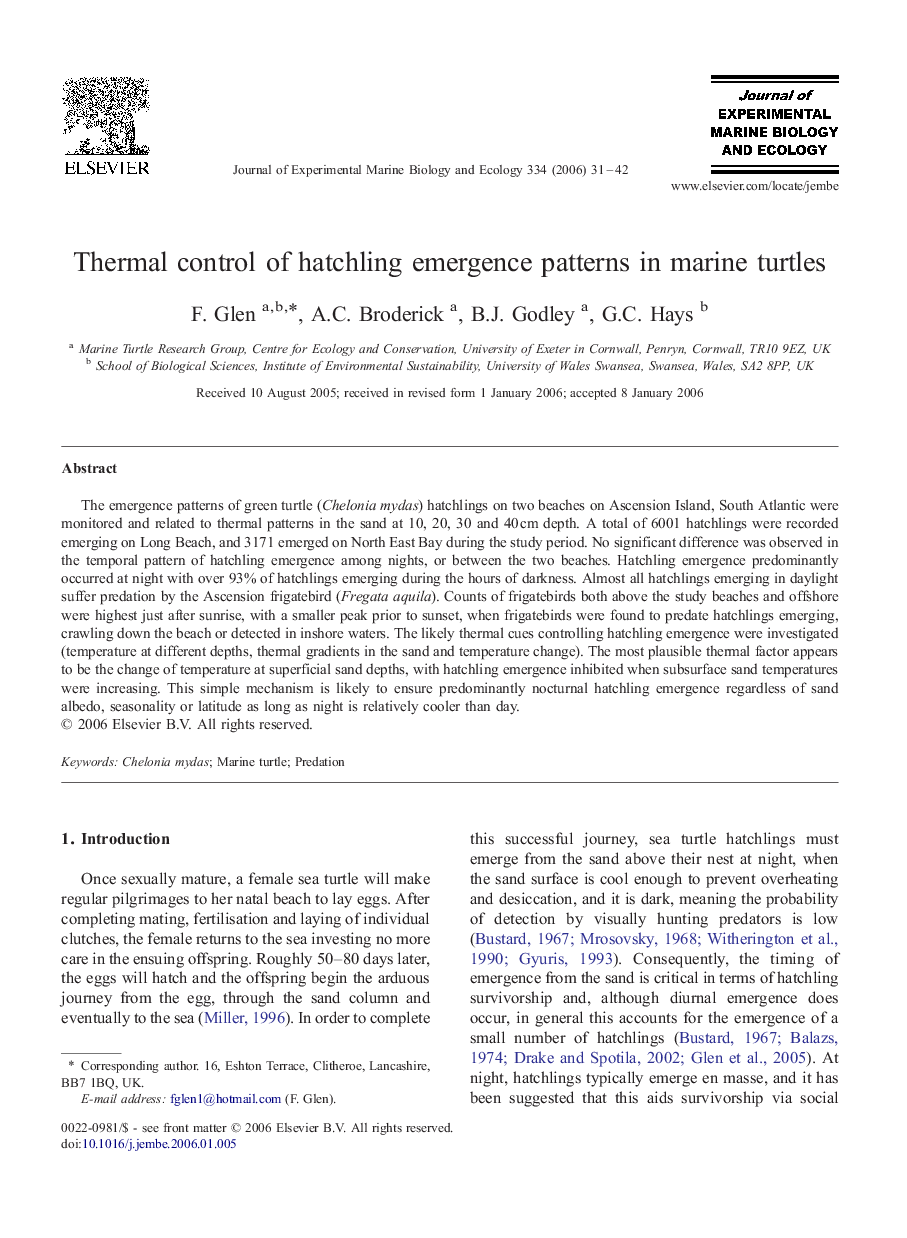| Article ID | Journal | Published Year | Pages | File Type |
|---|---|---|---|---|
| 4398001 | Journal of Experimental Marine Biology and Ecology | 2006 | 12 Pages |
Abstract
The emergence patterns of green turtle (Chelonia mydas) hatchlings on two beaches on Ascension Island, South Atlantic were monitored and related to thermal patterns in the sand at 10, 20, 30 and 40Â cm depth. A total of 6001 hatchlings were recorded emerging on Long Beach, and 3171 emerged on North East Bay during the study period. No significant difference was observed in the temporal pattern of hatchling emergence among nights, or between the two beaches. Hatchling emergence predominantly occurred at night with over 93% of hatchlings emerging during the hours of darkness. Almost all hatchlings emerging in daylight suffer predation by the Ascension frigatebird (Fregata aquila). Counts of frigatebirds both above the study beaches and offshore were highest just after sunrise, with a smaller peak prior to sunset, when frigatebirds were found to predate hatchlings emerging, crawling down the beach or detected in inshore waters. The likely thermal cues controlling hatchling emergence were investigated (temperature at different depths, thermal gradients in the sand and temperature change). The most plausible thermal factor appears to be the change of temperature at superficial sand depths, with hatchling emergence inhibited when subsurface sand temperatures were increasing. This simple mechanism is likely to ensure predominantly nocturnal hatchling emergence regardless of sand albedo, seasonality or latitude as long as night is relatively cooler than day.
Keywords
Related Topics
Life Sciences
Agricultural and Biological Sciences
Aquatic Science
Authors
F. Glen, A.C. Broderick, B.J. Godley, G.C. Hays,
